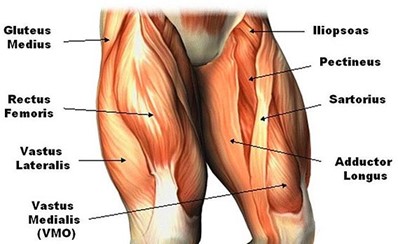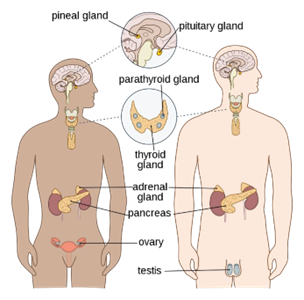Which muscle of the quadriceps femoris group lies on the side surface of the lower extremities?
Anterior tibialis
Rectus femoris
Gastrocnemius
Vastus lateralis
The Correct Answer is D
The quadriceps femoris group is a group of four muscles located in the anterior compartment of the thigh. These muscles are responsible for extending the leg at the knee joint. The four muscles that make up the quadriceps femoris group are the rectus femoris, vastus medialis, vastus intermedius, and vastus lateralis.
The vastus lateralis is the largest of the four muscles and is located on the lateral side of the thigh. It originates from the greater trochanter of the femur, the lateral lip of the linea aspera, and the lateral intermuscular septum. It inserts into the patella and the tibial tuberosity via the patellar tendon. The vastus lateralis is responsible for extending the leg at the knee joint and is also involved in stabilizing the patella.

Nursing Test Bank
Naxlex Comprehensive Predictor Exams
Related Questions
Correct Answer is D
Explanation
Intramembranous ossification is a process of bone formation in which bone tissue forms directly within mesenchymal (undifferentiated) connective tissue membranes. This process is responsible for the formation of the flat bones of the skull, including the frontal, parietal, occipital, and temporal bones.
Long bones of the arms and legs, bones of the pelvic girdle, and vertebrae are formed by endochondral ossification, a different process of bone formation in which bone tissue replaces hyaline cartilage.

Correct Answer is A
Explanation
DNA is a double-stranded macromolecule made up of nucleotides that carry genetic information. The sequence of nucleotides in DNA determines the genetic code, which controls the development and function of living organisms. Chromosomes are structures made up of DNA and proteins that carry genes. Nucleotides are the building blocks of DNA and RNA. RNA, on the other hand, is a single-stranded macromolecule that plays a key role in protein synthesis by carrying genetic information from DNA to ribosomes.

Whether you are a student looking to ace your exams or a practicing nurse seeking to enhance your expertise , our nursing education contents will empower you with the confidence and competence to make a difference in the lives of patients and become a respected leader in the healthcare field.
Visit Naxlex, invest in your future and unlock endless possibilities with our unparalleled nursing education contents today
Report Wrong Answer on the Current Question
Do you disagree with the answer? If yes, what is your expected answer? Explain.
Kindly be descriptive with the issue you are facing.
